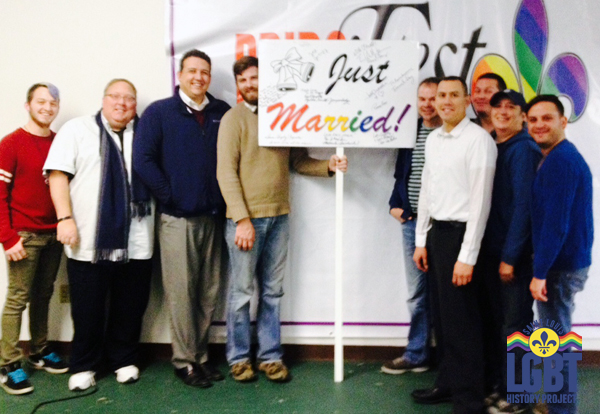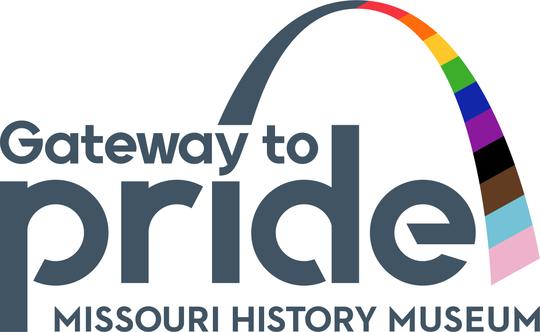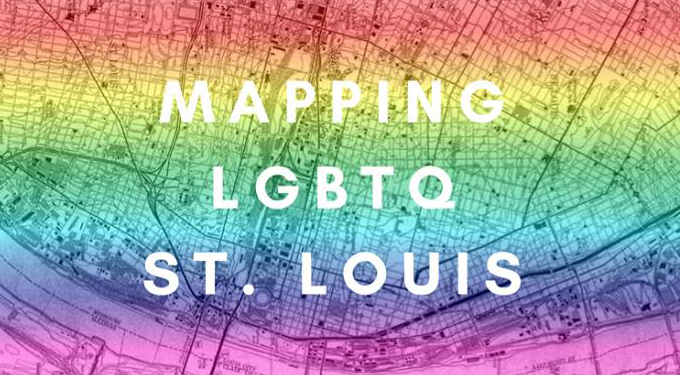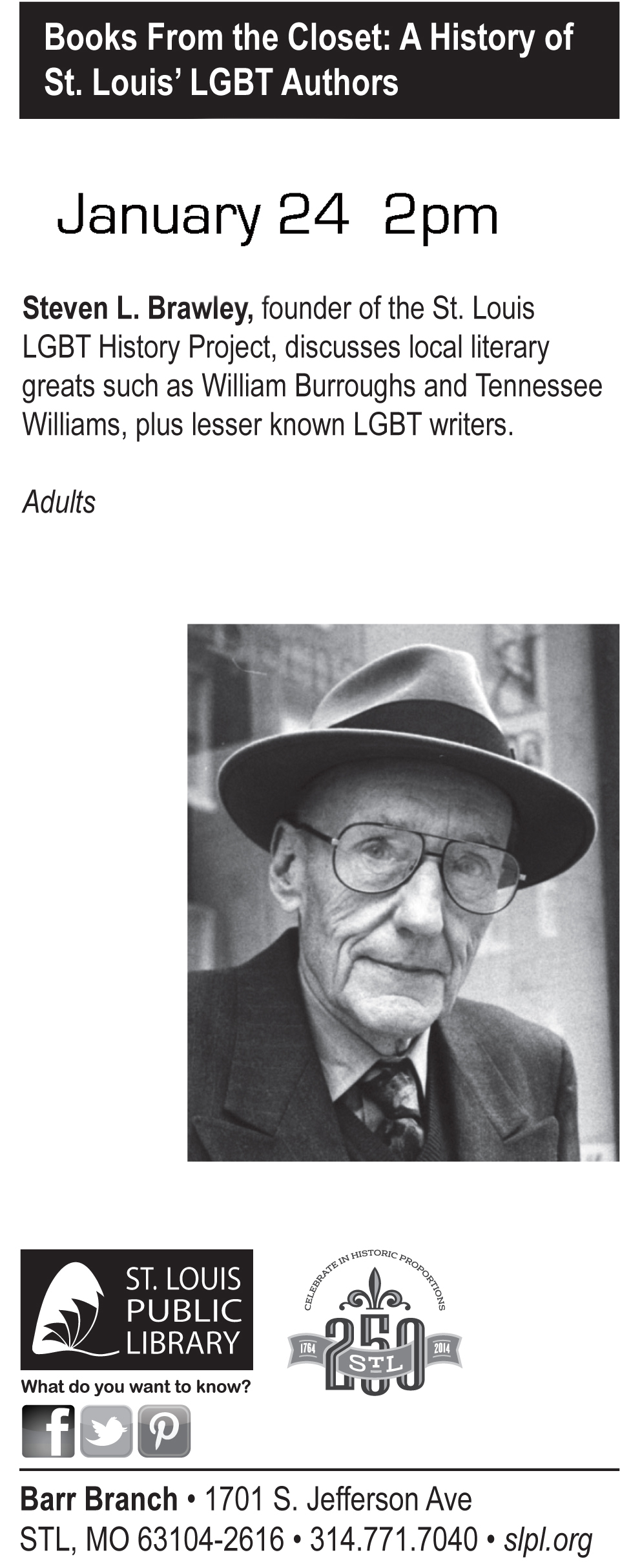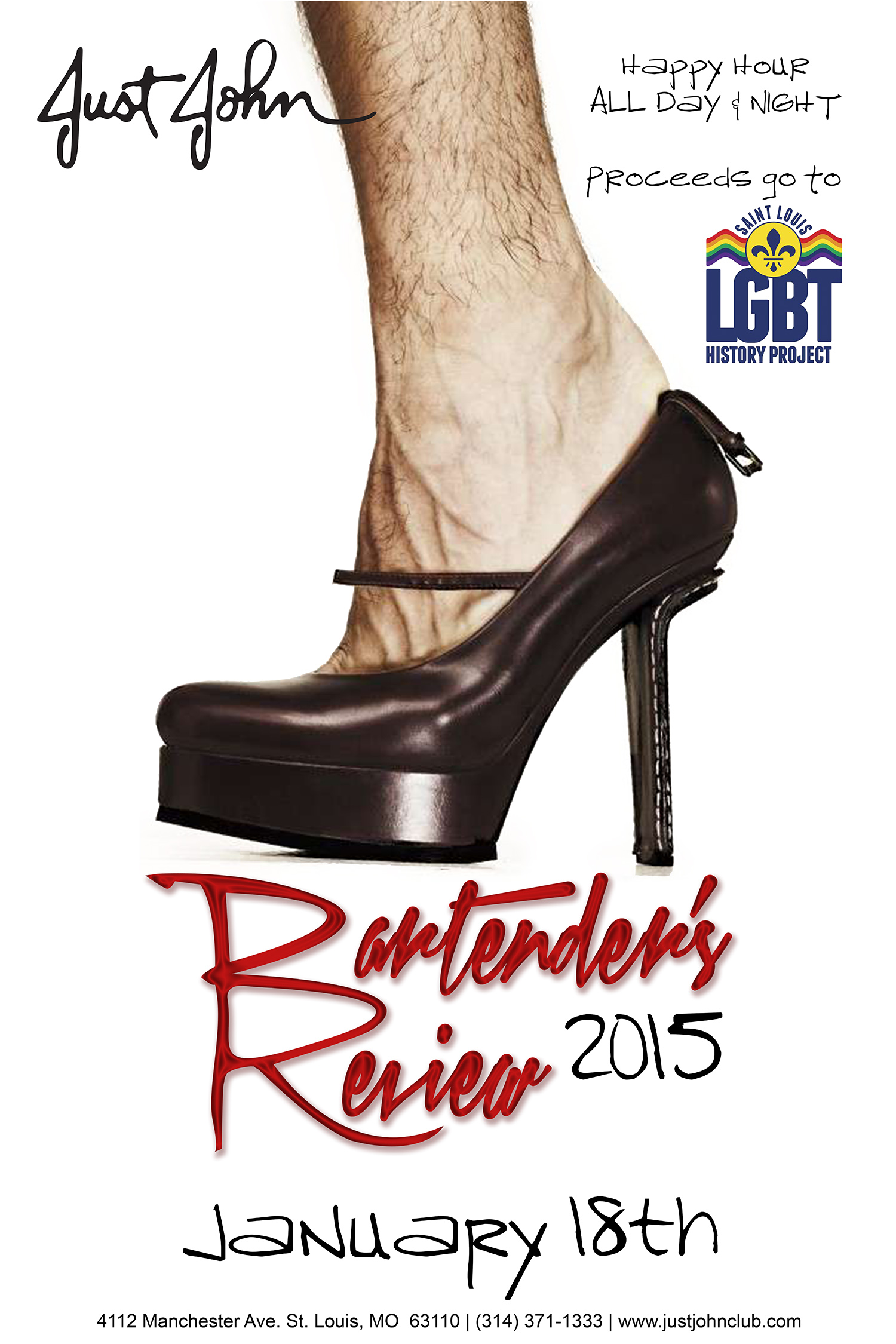Happy Holidays 2014
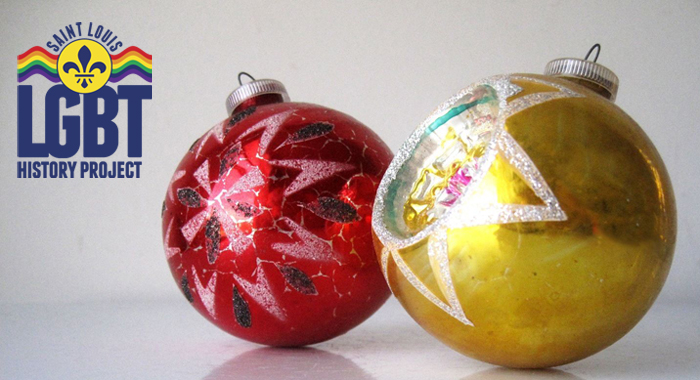
December 22, 2014: The Project sends holiday greetings and our heartfelt thanks to our supporters and contributors. We have been honored to receive "Christmas Presents" throughout the year that help us preserve and promote St. Louis' vibrant and historic LGBT past.. As we gather with family and friends, please take a moment to reflect upon the hard work and sacrfices made by the brothers and sisters upon whose shoulders we stand today. In the meantime, have a safe and healthy holiday. We have some exciting plans for 2015. Stay tuned.
City Hall Marriage Sign
December 11, 2014: St. Louis Pride, Inc. has donated a recent piece of history for the Project's archives. One of the signs used in the 2014 St. Louis Pride Parade (that accompanied the cars carrying the couples married in City Hall last June) was given to the Project at the Pride board's December 8 meeting. The sign was autographed by the four couples married in City Hall, along with the marriage officiants, the Honorable Joe Murphy, St. Louis Mayor Francis Slay, and St. Louis Recorder of Deeds Sharon Carpenter. The Project thanks St. Louis Pride, Inc. for preserving this important historical object.
